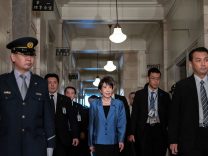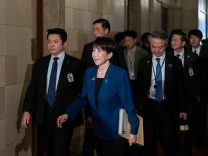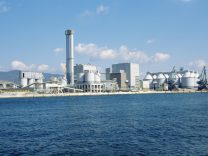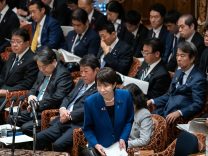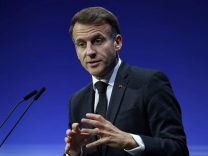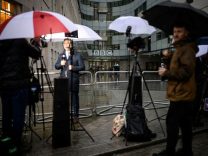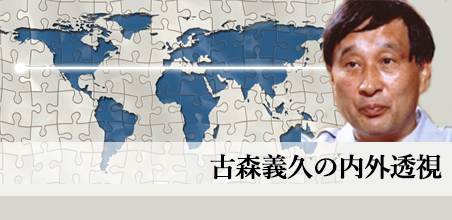モロッコに学ぶインバウンド戦略 その1「ハッサンII世ゴルフトロフィー」& 「ラーラ・メリヤム杯」

ラヴォワ・ガニオン クリスティヌ (株式会
2020年のオリンピック・パラリンピックとラグビーワールドカップ決勝戦が東京で開催されると発表されてから、私は欧米観光客を日本に呼び込むためのブレインストーミング・セッションに誘われることが急に増えた。より魅力的な戦略を練りたいというわけだが、特に東京から数時間離れた地域にどうすれば欧米観光客を呼べるかは難しい問題だ。
課題は様々だが、どの地域でもポイントは常に同じだ。例えば、海外の銀行カードを使ったATMでの現金引き出しが不可能であることや、日本では典型的な「1泊2日」の旅行パターンと異なる、長く旅先に滞在したい外国客のためのお手頃価格の宿泊施設不足、などだ。
日本の食事がおいしいのは間違いないが、旅館で出てくる懐石料理を一週間、毎食食べ続けたいという人はいないだろう。ヨーロッパの旅行者は基本、家族と共に最低一週間ほどは同じ場所に滞在したい。朝食は宿で取り、旅先のご当地グルメを楽しみ、夜は「我が家」に戻り静かに過ごす。しかし残念ながら日本にはこういった宿泊施設は滅多になく、国内の地方からは、こうしたヨーロッパの家族連れ旅行客は「来ないで」と言っているかのようである。
よく地方自治体は、地元のエンターテイメント設備の不足を懸念する。地元の方達は素晴らしく美しい環境の中に生活し、働いていると、ついその美しさが盲点となってしまいがちだ。しかし、欧米観光客が飽きっぽくてその地域の自然の美しさに興味を持たない、という心配は実は的外れだ。ヨーロッパの旅行客の習性を知らないばかりか、彼らが何を求めているか直接聞くことすらしてしない。
日本では、地方の「国際化」や観光戦略を立案する組織に外国人が加わっていない。伊勢志摩で行われたG7サミットの準備の段階で、私はその必要性を訴えた。相手(海外旅行客)が求めるものを知らずに努力してもそれは無駄ではないだろうか?
そんな時、国際的なゴルフイベントのコミュニケーション・コンサルタントを務める私の元同僚から、ヨーロピアンツアーのゴルフトーナメント、「第43回ハッサンII世ゴルフトロフィー」が5月初頭にモロッコの首都、ラバトにて開催されるという情報を得た。モロッコは、ヨーロッパ観光客のもてなしに関しては大ベテラン国であり、当ゴルフトーナメントは近々日本で開催される各種国際スポーツイベントにも大変参考になるに違いないと考えた。
今年ゴルフが参加競技としてオリンピックに戻ってくることもあり、私はノウハウを学びに早速モロッコに飛んだ。(私にとってモロッコは、幼少時代を少し過ごした土地でもあるという事がこの旅をチョビッとエキサイティングなものにしたのも事実である。)
もてなし、配慮、優しさ、行儀の良さやサービスに関して、モロッコと日本は幾つかの共通点がある。これらの特徴はモロッコがヨーロッパの人々にとってトップ観光地である理由でもある。モロッコは、お客様を心地よくさせてくれる。
先ず、モロッコとは何処にあるのだろうか?
立地
アフリカ大陸の北西に位置するモロッコの文化と歴史は、周辺の多様な環境によって大きく影響されてきた。北は地中海に面しており、スペインからほんの数キロ離れているだけで、ヨーロッパへのアクセスも便利だ。西側は南北に大西洋沿いに海岸となっており、東側はアトラス山脈がアルジェリアとの自然国境となっていて、ヨーロッパからサハラ沙漠地域の国々をつなぐ回廊となっている。また、事実上南地方では、西サハラ地域の一部を管理しており、モーリタニアとの国境となっている。モロッコの気候は北部の地中海地域には沖縄のようで、南部のサハラ砂漠に近づくとより乾燥していて暑くなる。
文化
ベルベル王朝、ビザンチウム、バンダル、ローマ帝国、アラブ、ユダヤ民族、スペイン人やフランス人といった多数の民族と奪い合い、または共有してきた土地がモロッコの複雑な歴史の基盤となっている。また、1956年の独立まで、スペインとフランスはモロッコの領有権を争ってきた。民族や宗教の多様性に対し忍耐力と受け入れ体制が高いモロッコの文化は、その混沌とした歴史のおかげで強化された。主にムスリム王国であるため、公式言語はアラビア語とベルベル語の2語であり、ビジネスや公式の場で使われるフランス語も人口のおよそ30%が話せ、書ける言語である。
経済
モロッコの経済は主に農業とヨーロッパの食品と繊維産業の輸出に頼っており、ファスト・ファッション産業で中国と競争している。ここ15年の間は特にコールセンター受託サービスや自動車製造の移転先として急成長している。モロッコは世界一のリン酸塩生産国であるが、中国との価格競争に苦しんでいる。比較的安定した政治とヨーロッパに近接していることから、アフリカ大陸では最大の観光市場を誇り、毎年1000万人以上の旅行者が訪れるため国の経済に大きく貢献している。
首都ラバト
王族の住まいでもあり、100年以上モロッコの首都であるラバトは、2012年に世界遺産として認定された。私が幼い頃に過ごしたのは賑やかなマラケッシュだが、ラバト街路を歩きながら、当時と変わらない静けさに嬉しくなった。うるさい車もなく、静かで落ち着いた人々。街の魅力は健在だった。
再び訪れた、ハッサンの塔の近くにそびえ立つ宝石のように美しいムハンマド5世廟、そして「シャラ」や「ウダイヤ」も素晴らしかった。しかし、主な観光スポット以外、街の外観は変わっていた。ラバトとサレ市を分けるブーレグレグ川の堤防には今では新しい橋が架かり、モダンなレストランやショップが並ぶ、非常に楽しい遊歩地になっている。
サレ側には小さいがトレンディなマリーナも出来ていた。2020年までには、「カルチャー・グリーン・首都」を目指すラバトの近代化は進んでおり、新しい美術館や劇場など、大規模建設が様々で見られる。最近では静かで近未来のようなトラムも街中を走っており、移動もより楽しくなっている。
マラケッシュやフェズに比べると規模は小さいが、旧街のメディナには、クラフト店や工房が並ぶバザールがある。客層のターゲットだが、バザールの半分は地元住民目当ての衣料や日用品を売っている店、もう半分は外国人観光客目当ての伝統的な銀や革製品店など。驚いたのは商品の値段設定がほとんどの場合固定価格で、私が子供の頃慣れていたような(私が大好きだった)値引き交渉することは難しくなっている。
店舗の間にある狭くて静かな小路は、学校の制服を着た子供達や野良猫たちでたまに賑わう。メインの道は全て直交しているため、迷ったとしても数百メートルまっすぐ歩けば心配なくすぐにメディナから出られる。
モロッコへの行き方
今回私は、エミレーツ航空を使い成田からドバイに飛び、カサブランカに乗り継いだ。昼頃に到着した私は飛行機の中でぐっすりと眠れたせいか、8時間という時差に悩まされることもなく、全体的に旅を楽に過すことができた。行きの旅中に1つ驚いたことは、エミレーツ航空のクルーの客室乗務員がアルゼンチン人、ロシア人、韓国人などと多国籍であり、それぞれが胸元に自身の国旗のピンをつけていた。
通常にしつこい機内アナウンスメントが今回少なめで必要なものがあればクルーは11カ国語で乗客の対応ができると伝えられた。スタッフ間ではまとまりもあり、仲も良さそうだった。(2020年の)オリンピック・パラリンピックの時には、日本の航空会社等が見習えるヒントになるのではと思った。
首都:ラバト
主要都市:カサブランカ
人口:3380万人(2014年)
面積:446,550 km2 (西サハラを入れると710,850km2)
言語:アラビア語(ベルベル語、フランス語)
通貨:ディルハム (MAD)
(その2に続く)
Golf in Morocco — A benchmark for Japan
By Christine Lavoie-Gagnon
Since the announcement of the Rugby World Cup and the Olympics Paralympics to be held in Tokyo, I have been asked several times to join brainstorming sessions in order to come out with ways to attract more European and North American tourists to Japan, particularly to regions that need a few hours traveling away from Tokyo.
A few topics are constantly put on the table, like the impossibility to withdraw cash from ATMs with a foreign card or the fact that Japan seriously lacks of affordable accommodations for families that wish to stay longer than the Japanese “2-days 1-night” traveling pattern. No one wants to eat undoubtedly delicious but heavy Ryokan full courses at every meal for a whole week. European tourists generally like to travel with family and stay for a week or more at each place they travel to. They enjoy having breakfast at their base, then discover regional delicacies in typical restaurants as they visit around and come back for a quiet night “home.”
Unfortunately these kind of accommodations are close to non-existent in the country and it certainly pushes away European families from the outer-Tokyo areas.
Regional Authorities also often worry about their few entertainment attractions. When you live and work in breathtaking surroundings, you often get beauty-blinded. But their fear that Western visitors would quickly get bored by what they have to offer is the very sign that they don’t know their sought for target at all. Not only have they no clue of European tourists habits, but they don’t even think of asking them directly what they want.
None of the groups of people purposely dedicated to “internationalize” local communities and sightseeing spots throughout the nation include foreigners. I even had to recommend it myself for the preparation of the G7 Summit in Ise-Shima.
Their intention is incontestably the right one. But why put all efforts for the others without knowing their needs?
As I was discussing this with an ex-colleague who now works as Communication Consultant for international golf events overseas, she mentioned that the European Tour was holding a tournament in Rabat, Morocco, early May: the 43th Hassan II Golf Trophy. As Morocco is undeniably the most experienced country in welcoming European tourists and as this golf tournament is similar in context to the many international sports event coming up soon to Japan, Golf also being back to the Olympics, I decided to fly over and learn from the Moroccan’s know-how. I would lie if omitted to mention that my excitement for the trip was a “tiny-bit enhanced” by the fact that Morocco is part the land of my childhood…
It is good to know from the start that Morocco and Japan share a few similarities in their dedication to hospitality, discretion, kindness, good manners and quality of services. This contributes for a great part in making the country one of the top holiday destinations for Europeans. Morocco masters the art of making guests feel at home.
But first, where is Morocco?
Location
Located on the top left part of the African continent, its variety in surroundings have had a major effect on its culture and history. The north is limited by the Mediterranean Sea, only a few kilometers away from Spain, opening an easy access to Europe. Delimited by the Atlantic Ocean from north to south on its western littoral, and on its eastern frontier lie Atlas mountain ranges, a natural border with Algeria, the country has been the corridor from Europe to the Saharan countries through history. In the South, it administrate de facto a portion of the Western Sahara region, which separates the country from Mauritania.
Culture
Morocco’s rich and complex history is based on lands shared and fought by with multiple ethnicities, from Berber dynasties, Byzantine, Vandal and Roman Empires, to Arabs, Jews, as well as Spanish and French. The latter two having acting as protectorate until the independence of Morocco in 1956. The country’s chaotic history has nevertheless enriched its culture with tolerance and acceptance of different ethnicities and religions. Being primarily a muslim kingdom, the two official languages are Arabic and Berber, as French, the language of business and some ministries, is spoken and written by more than 30% of the population.
Economy
Morocco’s economy is greatly relying on agriculture, on its exports to Europe in the food and textile industries — competing with China for the fast-fashion markets. Offshoring for call services and car manufacturing in particular, has grown in the las 15 years. It is the first producer of phosphate in the world, but suffers from price competition with China.
Tourism is also accounting for a great part of the economy, with over 10 million foreign tourists each year, the biggest market in Africa, due to its proximity with Europe and it’s rather stable political status.
Rabat
Rabat, a UNESCO World Heritage since 2012, has been the Capital City for over a hundred years and is the home of the Royal family. As I lived in busy Marrakech as a child, it felt good to feel the same quietness as I remembered when I wandered in Rabat’s streets. No noisy cars, the calm and quiet people… this city hasn’t lost its charms. It was a marvel to revisit the magnificent Chellah, the jewel-like Mohamed V Mausoleum by the Hassan Tower, as well as the Oudayas. Apart from it’s main touristic features though, the city had physically changed. The banks of the river Bouregreg, which separates Rabat with the city of Salé, are now linked by a new bridge and offer modern shops and restaurants along a very enjoyable promenade, with a small but trendy marina on Salé’s side. New museums and theaters, massive construction everywhere, Rabat is clearly modernizing towards its goals of becoming the “Cultural Green Capital” by 2020. The city is now equipped with flashy — and quiet — tramway lines, which make moving around town even more fun!
The old town, the Medina, a bazaar where you find a concentration of craft shops and workshops, is very small compared to those of Fez or Marrakech. Half of it targets local shoppers selling daily clothing and fashion, as the other half still offers traditional silver or leather goods to the enchantment of foreign tourists. In between, you find narrow and quiet alleys, sometimes cheered up by school children in uniform or playful stray cats. It is however very easy to get around as the main alleys are perpendicular and if you think you are lost, you just walk straight for a few hundred meters and you’ll find your way out. I was also surprised that prices are fixed most of the times and you can’t bargain much like I was used to — and loved ! — back in the old days.
How to get there
This time I used Emirates Airways on a night flight from Narita to Dubai and transited to Casablanca after a short stop. Arriving around noon after a fairly good night sleep in the plane, my body didn’t feel the 8hrs time difference and it made my entire trip very easy.
One point that surprised me on the way was that Emirates’ crew was composed of flight attendants from around the world, wearing country flag pins on their chest, as broad as Argentina, Russia and Korea. The usually annoying announcements were very few and they kindly told us that if we needed anything, they could cover 11 languages. The staff seemed to be well coordinated and getting along naturally. This could be a good hint for Japanese airlines at the time of the Olympics & Paralympics.
Country facts
Capital City: Rabat
Major City: Casablanca
Population: 33.8 milion (2014)
Size: 446,550 Km2 (710,850Km2 with Western Sahara)
Language: Arabic (Berber, French)
Currency: Dirham (MAD)
(to be continued…)
写真:全て(C)Christine Lavoie-Gagnon
トップ)ラバットの「ロイヤルゴルフダーエッスサラム」ゴルフ場
記事内、上から順番に:
1)ラバット市で5月に開催された「第43回ハッサンII世ゴルフトロフィー」
2) ムスリム王国だが他の宗教に歴史的に寛容な国だ
3) ムハマド5世廟は日の出から夕日まで会場されていて、司式僧がお祈りなどを読む
4) 12 世紀中頃に建てられたウダイヤのカスバ
5) ラバトのメディナは小さいが充実している
6) モロッコでは小さな子供を連れて旅行するのは楽しく安全である
あわせて読みたい
この記事を書いた人
ラヴォワ・ガニオン クリスティヌ株式会社CLAGA CEO
1973年生まれ、カナダケベック州出身、1994年より日本在住。
ルノーアジア太平洋地域広報部長や旧武富士広報部長などを歴任し、企業広報に強いバックグラウンドを持つ。2007年より株式会社CLAGAの創業者兼代表取締役として独自広報コンサルティングを開始。海外向けのテレビ番組を始めニュース特集、映画、雑誌、新聞などの日本に関するコンテンツも多く制作している。2011年の東日本大震災の緊急取材をきっかけにNPO法人NADIAを創立し積極的に現地を支援した。








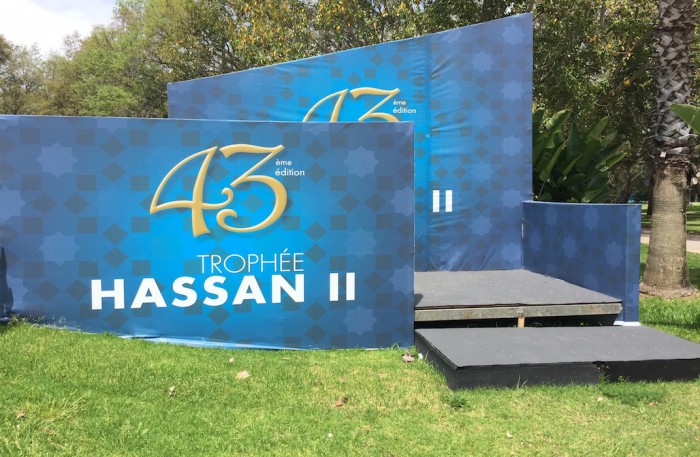
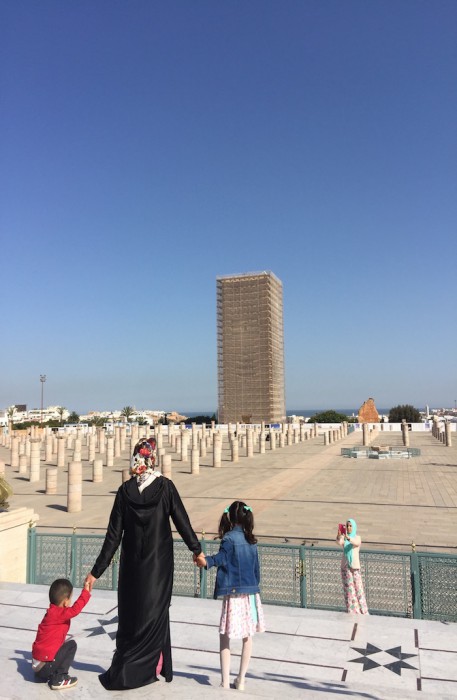
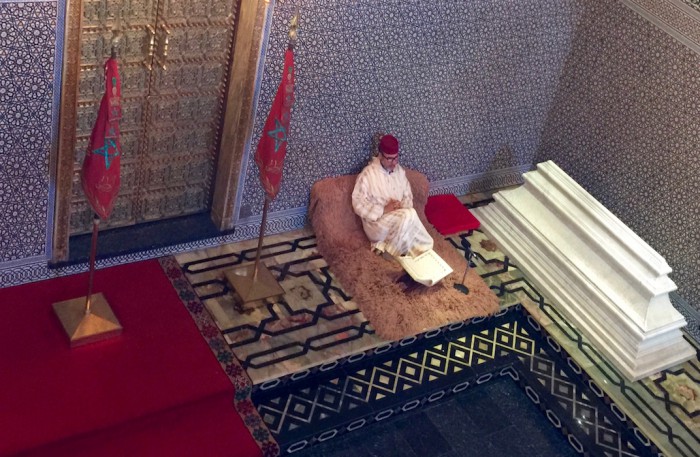
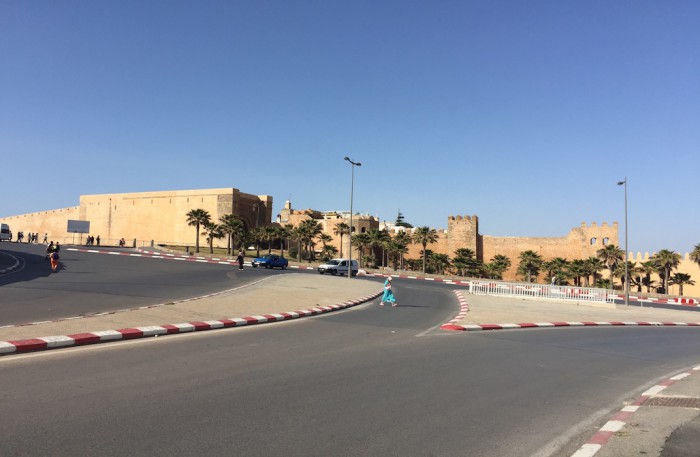
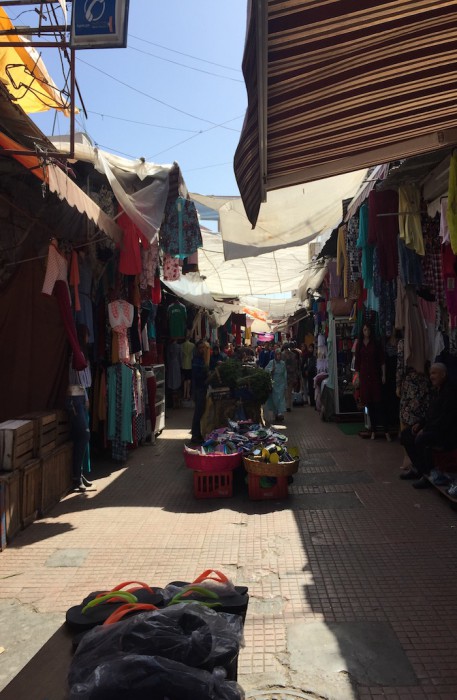


![[安倍宏行]【外国人観光客大阪ジャックの実態】~春節「爆買い」の先にあるもの~](https://s3-ap-northeast-1.amazonaws.com/japanindepth/wp-content/uploads/2015/02/6c80bbb701b65b868857721b88432967_s-164x122.jpg)
![[Japan In-depth編集部]【原宿に新名所、訪日観光客対応に第一歩】~MOSHI MOSHI BOXオープン~](https://s3-ap-northeast-1.amazonaws.com/japanindepth/wp-content/uploads/2014/12/20141225_140821-164x122.jpg)
![[西村健]【東京一極集中は加速化する】〜特集「2016年を占う!」東京都政~](https://s3-ap-northeast-1.amazonaws.com/japanindepth/wp-content/uploads/2016/01/160113nishimura01-164x122.jpg)
